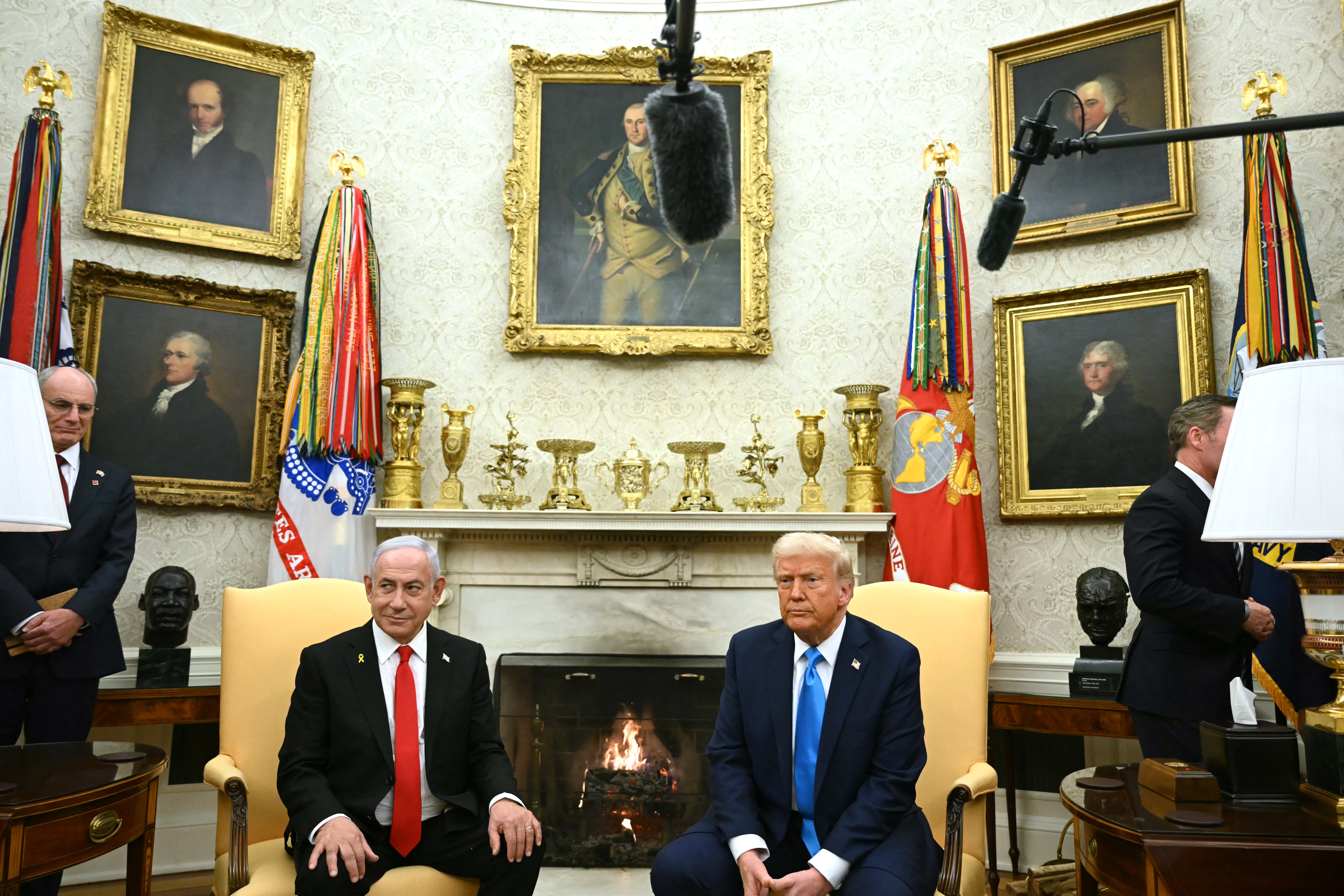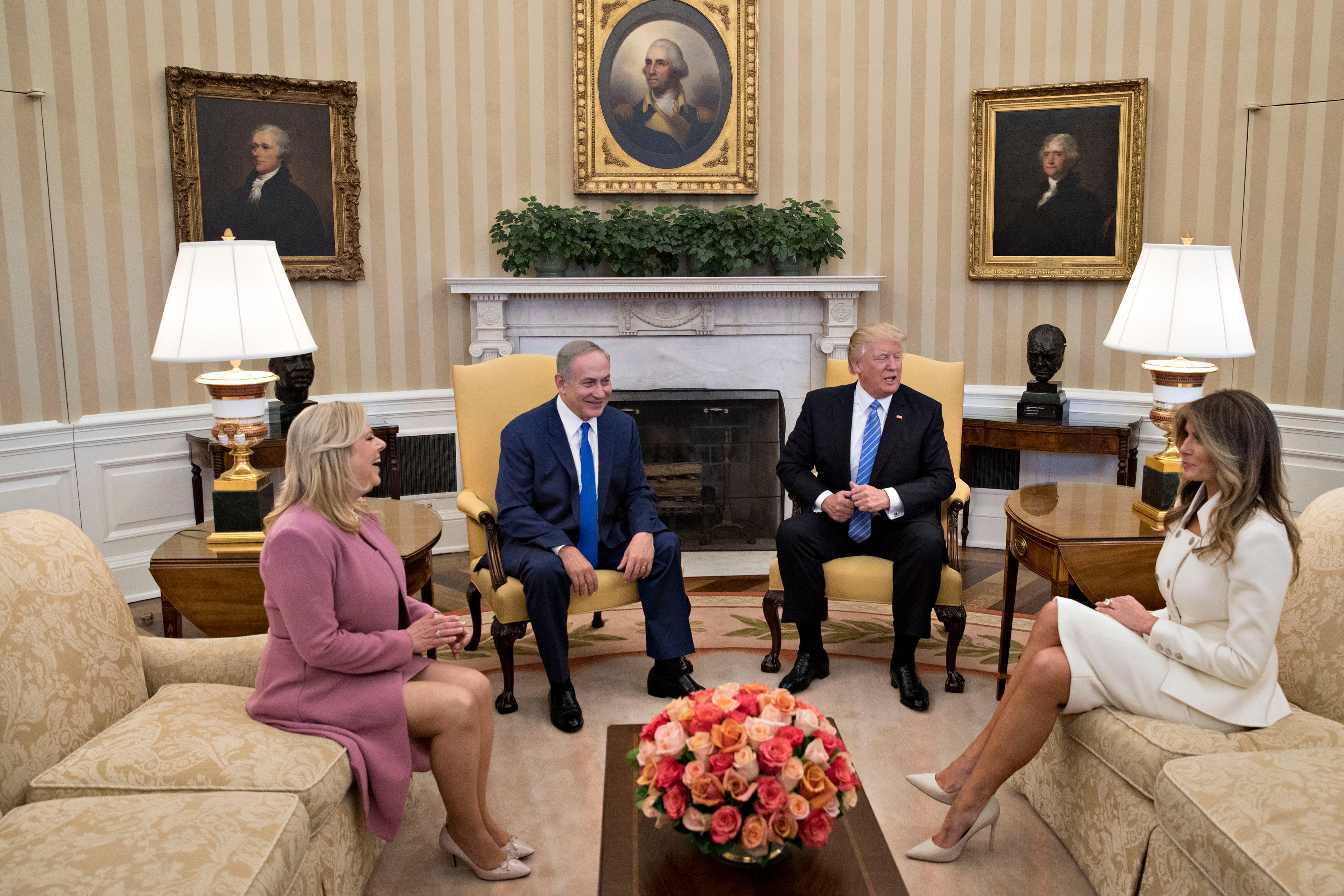Trump has removed one thing from the Oval Office that has been there for 50 years. But why?
Origins of the Swedish ivy remain unclear as Trump administration replaces it with golden artifacts from White House collection
For over half a century, one thing was a constant in the Oval Office: the Swedish ivy plant above the fireplace - until now, that is.
As the second Trump administration moved in, the plant was replaced by a range of golden objects.
The ivy had seen a host of visitors since it was first perched atop the Oval Office’s mantel including Nelson Mandela, Pope John II, Margaret Thatcher and Whitney Houston, The Washington Post noted.
During the presidencies of Gerald Ford and Jimmy Carter, the ivy was bushy before being cut down during the reign of Presidents Ronald Reagan and George H.W. Bush. It appears in Bill Clinton’s presidential portrait. When the second George Bush arrived, it was split into three shrubs.
It grew into a wider, hedge-like plant during the presidency of Barack Obama, who briefly changed it out for a different kind of ivy before it was cut into two smaller plants during Trump’s first term. During President Joe Biden’s time in the White House, the ivy once again grew bushier.
While it was still there when Trump returned to office in January, it was gone by last month. Numerous people have descendants of the ivy in their homes, The Post noted. Clippings have been handed to White House staff when they leave their posts, and they have, in turn, given parts of the plants to friends and family.

Rico Gardaphe worked in the Office of Presidential Correspondence during the Obama administration. He told the paper that his Brooklyn home is “overrun” by the ivy.
“I kept a spreadsheet of all the people I’ve ever worked with,” he said. “It’s been my goal to get every one of them a clipping.”
“It was at the very bottom of things that I decided to get upset about,” he said regarding the ivy’s February disappearance from the Oval Office.
On March 8, Mother Jones reported in a headline that “The Country’s Most Famous Houseplant Is Missing.”
At a reception in Dublin, Ireland, in 2000, Clinton told the attendees: “In the Oval Office of the president, on the mantel, there is a beautiful ivy plant which has been there for almost 40 years now. It was given to President Kennedy by the then-Irish ambassador to the United States as an enduring sign of the affection between our two people.”
However, the story may not be true, The Post noted, as the John F. Kennedy Presidential Library told the paper, “Unfortunately, we haven’t been able to find evidence of the plant’s origins.”

Kennedy scholar Barbara Ann Perry told the paper the oldest photo she has been able to find of the plant in the Oval Office is from the Ford White House.
“It does not make sense, does it? For an Irish ambassador to give Swedish ivy,” said Perry. “I mean, it’s still possible that the Swedish ambassador gave President Kennedy this gift.”
However, the plant, Plectranthus verticillatus, comes from South Africa and is in the same family of plants as mint and sage. The White House ivies get switched out and rest up in a greenhouse between their stints in the Oval Office, which is where the ivy was moved, without being replaced, last month, according to The Post.
So why the change? Each new presidents decorate the White House to their individual tastes, and the second Trump administration has replaced the ivy with golden artifacts from the White House collection, including a bronze basket made in France in about 1815, handed to the Nixon administration in 1973.
To each of the basket’s sides are urns acquired by President James Monroe in 1817, not long after the British burned the White House during the War of 1812. The outer two pieces come from the Eisenhower administration and are usually stationed in the Vermeil Room.
Join our commenting forum
Join thought-provoking conversations, follow other Independent readers and see their replies
0Comments